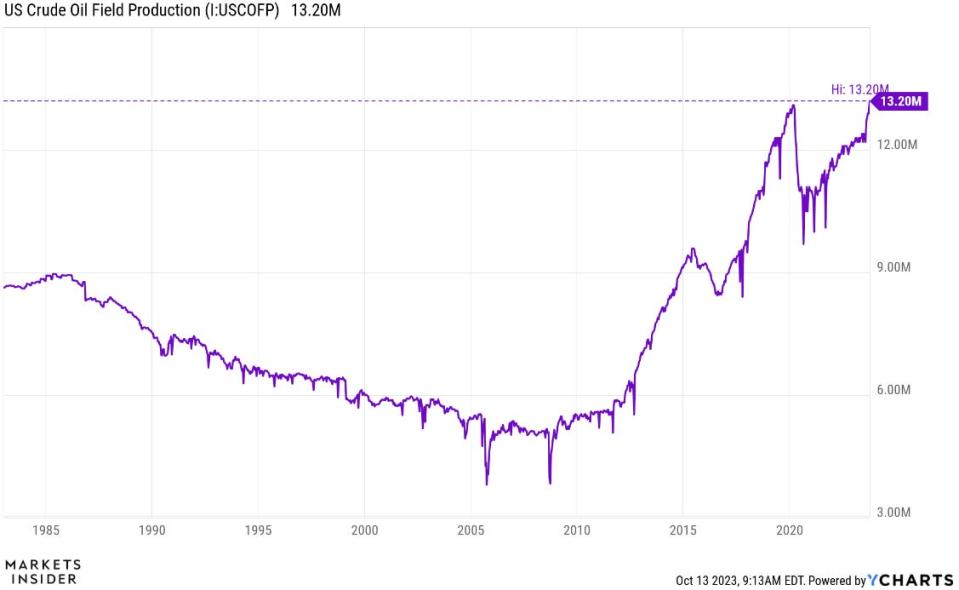CHART OF THE DAY: US oil production hits record high amid rising geopolitical tensions

US crude oil production surged to a record high of 13.2 million barrels a day last week.
The new high comes amid rising geopolitical tensions in the Middle East.
Oil prices have also jumped in recent months, with Brent crude up 24% since June.
Our Chart of the Day is from YCharts, which shows that US oil production surged to a record high of 13.2 million barrels a day last week.
The prior record was 13.1 million barrels a day hit in February 2020, right before the COVID-19 pandemic slowed down the economy.
The surge in oil production comes amid a period of heightened geopolitical tensions. Russia is still waging war against Ukraine, the Middle East has seen a war breakout between Israel and Hamas, and strains between the US and China remain elevated.
The new record high also comes as oil prices have also jumped in recent months, with Brent crude up 24% since June. That's as top OPEC+ producers Saudi Arabia and Russia have curbed supplies.
What's perhaps most impressive about the steady surge in oil production is the fact that the weekly US oil rig count remains well below the 2014 peak of more than 1,600 rigs. There were just 502 active oil rigs in the US last week, representing a 69% decline from the 2014 peak. That shows just how efficient America's energy industry has become after a period of depressed oil prices from 2014 through 2021.
"Crude production is cyclical, but over the last decade and a half has registered a strong uptrend relative to operating rigs or employment in the oil and gas industry. This is a powerful form of technological progress and productivity growth," Comerica Bank chief economist Bill Adams told Insider on Thursday.
There are plenty of economic benefits to America as it consistently becomes a net exporter of crude oil. Adams highlighted that it makes America's economy more resilient and reduces the chance of a recession in 2024.
It also reduces the risk of 1970s-style stagflation, which was in part driven by oil supply shocks.
"Unlike in the 1970s, the US is a net exporter of petroleum products. That means that the trade deficit now tends to narrow as petroleum prices rise, supporting the value of the US dollar and reducing prices of imports and related inflation pressures," Adams said.
"Rising energy output will be a tailwind to real GDP growth in the fourth quarter of 2023, and will contribute to lower risk of a US recession in 2024."
Read the original article on Business Insider
